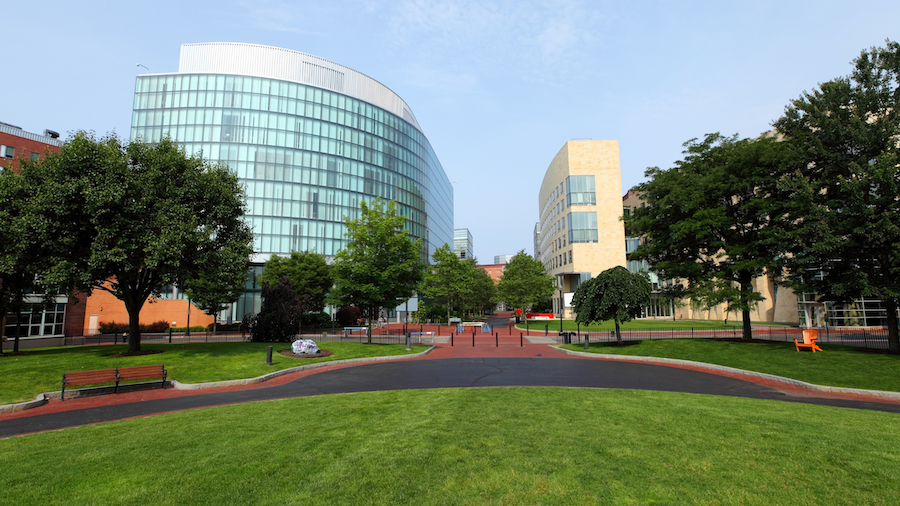Companies merge all of the time, as one buys out another for its resources or market share. Colleges can do this as well, though it is far less common. Northeastern recently announced its acquisition of Marymount Manhattan College, a small liberal arts school in New York with a focus on the performing arts.
In this article we’re going to explore the implications of the merger, both what it means in the moment, and what it signifies for the broader college landscape. This merger matters most for students at the two schools of course, but its causes and after effects will ripple through the rest of higher education, and are worth exploring. Let’s jump right in!
Which Colleges are Merging, and Why?
Northeastern University is a large private research university based in Boston. They are a good school, but are also well known for their aggressive push to climb in the US News rankings, and their other recent expansions. They have grown remarkably in recent years, absorbing two other colleges since 2019; the New College of the Humanities in London and Mills College in Oakland.
Marymount Manhattan College, on the other hand, is a small private liberal arts college in Manhattan. They were founded as a Catholic school, as the name suggests, but are no longer associated with any faith. They have a particular focus on the performing arts, with strong connections to the dance and theatre scene in New York.
Both schools have their own motivations for the merger. Marymount has seen declining enrollment since the pandemic, and while they are still financially solvent, they are dependent on tuition to keep afloat. As their pool of students has dropped from above 2,000 to closer to 1,400, they believe that the merger is the best way to keep the school viable, and that it will be unable to survive on its own. The closure of other liberal arts colleges in New York, including Wells College and Alliance University suggests that this is not a limited phenomenon.
Northeastern, in contrast, has seen a dramatic surge in interest in recent years. The number of applications they receive has gone up significantly, and while they can expand their offerings in Boston somewhat, adding a whole new campus, and all of its student availability, is the fastest way to expand. On top of this, the school gives them a toehold in New York, a business and cultural capital of the world. Boston is a grand city, but a campus in New York will let them build new opportunities for their students. Location, as they say, is everything.
What Impacts Will This Have on Northeastern and Marymount
The first thing to note is that while this major was just announced, like all mergers, it needs to receive regulatory approval before it is allowed to proceed. This could postpone it for as much as two years before it goes into effect. Thus we will not see any effects on the ground for a while. The universities have announced their plans for how this merger will affect students and faculty, but when it actually occurs is an open question.
Students at Marymount will be directly enrolled in Northeastern, and be able to continue their studies in their chosen field. They will receive personalized guidance to ensure they are able to navigate their studies and graduate on time. Students at Northeastern will gain access to the resources at Marymount as well, but those appear to be in for more of a shakeup.
The faculty at Marymount will receive one year contracts, and be considered for tenured, tenure track, and non tenure track positions based on availability. This is much worse for the faculty, as there is no guarantee that tenured faculty at Marymount will receive tenure at Northeastern.
Northeastern is also looking to expand and possibly modify the course offerings at Marymount’s campus going forward. While they will likely keep the performing arts focus, they are likely to add significant coursework in business and technology, as the school’s Manhattan location makes those fields very attractive. Northeastern already sends a small number of students to do internship experiences in New York; a new campus in the city will only expand those opportunities.
Once the merger is complete, admissions will be run solely through Northeastern, and Marymount will be renamed to Northeastern University – New York City. While there are likely plans beyond that, they are being played close to the chest for now, save for general comments about an expanded need for faculty at the new campus.
What This Merger Signifies for Colleges Generally
This merger is the latest canary for small liberal arts colleges, many of which have experienced increasing pressure after the Covid 19 pandemic. College enrollment as a whole has been steadily declining since then, even as application rates are significantly up at the most competitive schools. The institutions being squeezed the hardest by this are small private liberal arts colleges, especially those without major names or large endowments.
These schools rely directly on tuition funding to remain solvent, and so need students to enroll who are able to pay some or most of the tuition expenses. As more students opt to attend lower cost options, such as state and community colleges, private liberal arts colleges are left in a pinch.
Whether or not we will see more mergers like this is uncertain, but we believe it is unlikely. Northeastern is an exception, rather than a rule; most universities expand slowly, if at all, and the ones who open new campuses generally do so abroad, rather than within the US. That said, mergers of several small liberal arts colleges together may happen, as they pool their resources to attempt to remain afloat. WHile we have not seen this yet, as closures mount, some may look for whatever options are available to them.
The high cost of college is one of the largest factors in why this is happening. While the most expensive universities are pushing $100,000 a year in tuition costs, all prices are rising steeply. This leads to students wanting to ensure that the price they pay is worth it, and focusing on schools seen as providing the best return on investment. This focuses on two categories: public schools with lower tuition rates, and the very top tier of private schools, ones which students believe give them a better chance of landing high paying careers.
What the Northeastern Merger Means for You
Unless you are currently a student at Northeastern or Marymount, this merger is unlikely to impact you directly in the near future. If you are considering applying to Northeastern, then the expanded opportunities in New York the merger will provide may serve as another point in their favor; though this of course depends on your own priorities for your collegiate studies.
The broader implications of the merger may be of more interest to some students. As the acceptance rate drops at many top universities, it’s actually becoming easier to get accepted at some other schools where registration is falling. The trick is determining where this is the case.
While the very top tier of small liberal arts colleges is still maintaining their enrollment rates, as you go down to the second and third tier liberal arts institutions, where endowments are smaller and they are more dependent on tuition to remain solvent, they are becoming more desperate for students.
Many of these schools are need-aware in admissions. Specifically, if you are able to pay the full cost of tuition, you will receive an advantage in admissions. This doesn’t mean you can get in regardless of your grades, but that they may be more willing to overlook shortcomings in other areas of your application.
This can alter your college list and application strategy, as a higher tier liberal arts college may be struggling to manage their enrollment successfully. This can make it easier to get into a high tier school than it would be otherwise, so long as you are careful about where to apply. Note that this only applies to these small liberal arts schools, not to larger high tier research universities.
Final Thoughts
The college landscape is constantly shifting; while this is a larger change than most it is not unprecedented. It remains to be seen if any other universities will follow in Northeastern’s footsteps and merge with a small liberal arts college to expand their footprint. We don’t anticipate it spreading, but will be sure to let you know if any changes develop.
College applications, and the entire higher education system, is incredibly complicated, with many caveats and pitfalls when trying to apply to top schools. We hope this article has explored one such, and the strategic implications thereof. If you want advice on college application strategy, either related to this or any other aspect of your journey to college, schedule a free consultation with us today. We have a long experience helping students in every step of their educational journey, and are always happy to hear from you.








